MUSEO IN-VISIONS
(Recent Past of Hungate)
Museo In-Visions engages with the recent past of St Peter Hungate as a museum of Ecclesiastical Art (1933-1990s) and celebrates the innovative approach to churches no longer needed as places of worship that Hungate initiated for the first time in England.
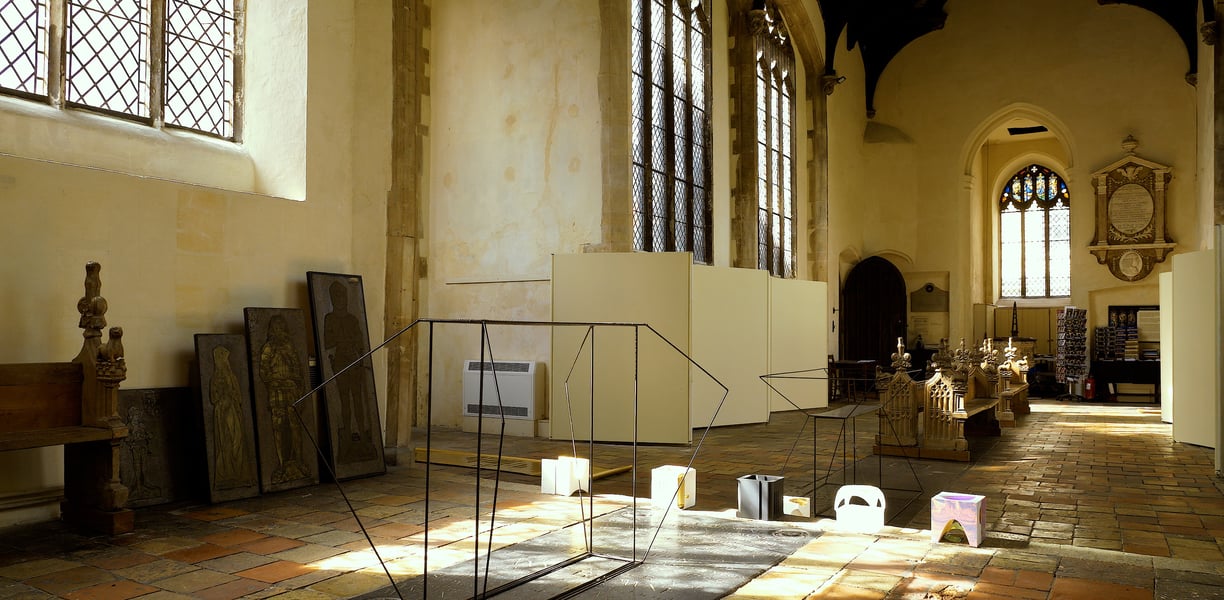

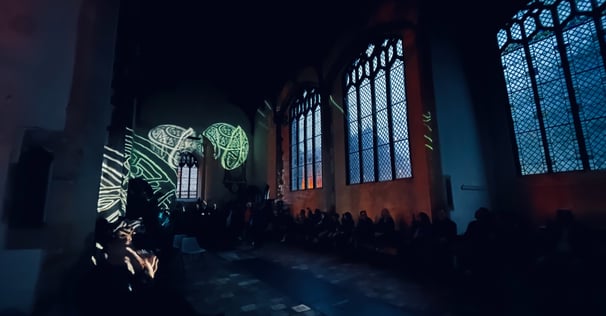

Heritage Capriccio - Marian Saunders & Hannah Perowne
Delivered as compline – a reflection at the end of the day – Marian Saunders’s live performance Heritage Capriccio mobilises the painterly style of capriccio (a visual fantasy that brings buildings, ruins, and architectural elements in a fantastical aggregate) to frame the new museum narrative.
The abstracted visuals come from the collection of objects of Hungate Museum of Ecclesiastical Art, many of them musical instruments.
The sound vibrations come from Hannah Perowne 's live violin performance of Johann Sebastian Bach’s Violin Partita No.2 in D Minor.
The result is an immersion in the kaleidoscopic multiplicity of sounds and segmented floating colours, allowing the audience to choose what to pay attention to, like in a museum.
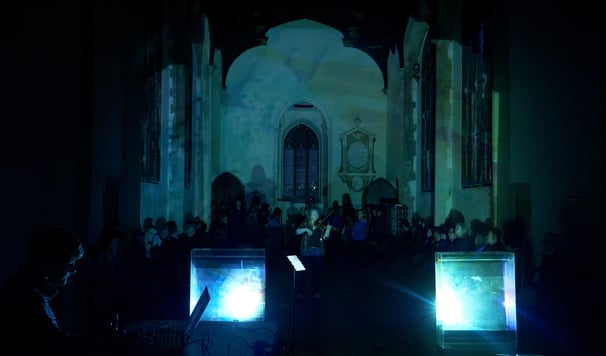

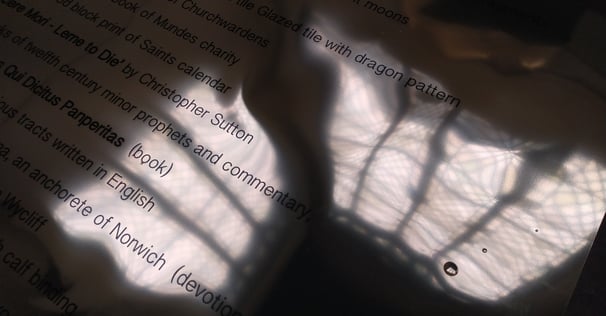

Medieval Light-Architectural Metaphors in a Museum - Dr Iuliana Gavril
This intervention invites the audience to remember Hungate’s recent past as a museum.
The intervention actualises Hungate as a museum of ecclesiastical art in the form of the printed (undated) inventory of 225 objects on a gold reflective surface.
In addition, the intervention activates the space as a museum in which objects are on display as an extension of the research undertaken on medieval architectural metaphors for claustral life, drawing on twelfth-century Latin texts.
For the medieval religious person, the cloister was both heaven and hell, prison and courtyard, furnace and paradise. The medieval contrasting realities are materialised in the intervention in plaster and resin casts (earthly sanctuary, paradise, treasure room, courtyard, furnace) and one 3D printing object (prison). In doing so, the intervention becomes a mattering of metaphors, that is, taking the meta-phor (carrier of meanings across) to matter-phor (carrier of matter-flow).
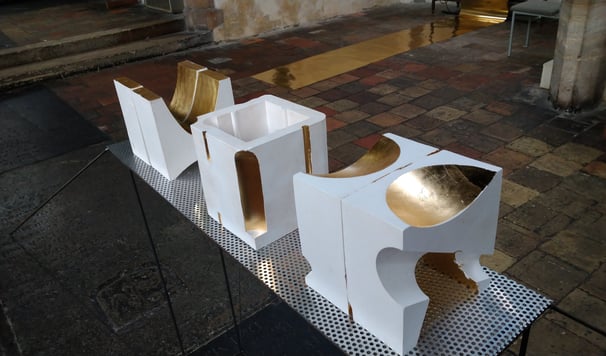

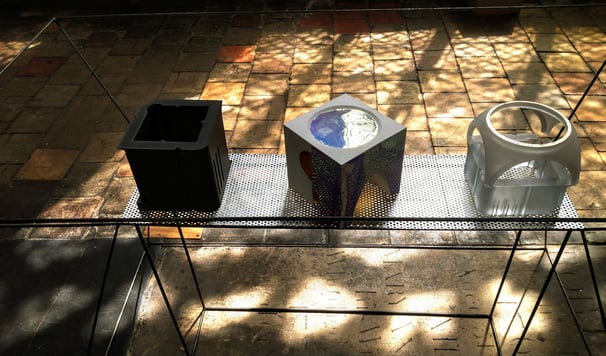

INVERTLIGHT
Light-space interventions in heritage settings
Contact
© 2025. All rights reserved.